Frozen Blackeyed Peas Recipe
If youâre looking for a delicious and kidney-friendly way to celebrate New Yearâs, this Frozen Blackeyed Peas Recipe is a perfect fit. Black-eyed peas are a Southern tradition believed to bring good luck and prosperity, and this recipe is carefully adapted to suit a CKD diet. By using lower-sodium ingredients and avoiding canned peas, this dish is flavorful, hearty, and health-conscious.
As a Registered Dietitian with over 25 years of experience, I specialize in creating recipes tailored to the needs of individuals with Chronic Kidney Disease (CKD). Inspired by my personal experiences helping family members manage CKD, Iâm committed to providing accurate, evidence-based guidance that prioritizes both health and flavor. This recipe reflects my dedication to crafting kidney-friendly meals that support your health goals while celebrating cherished traditions.
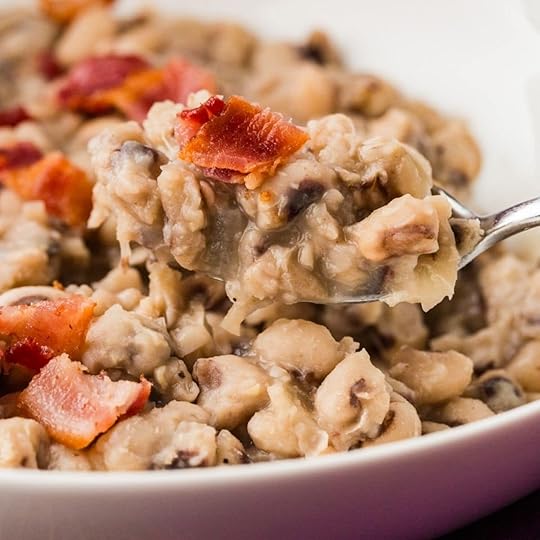
This Black-eyed peas renal recipe is ideal for a CKD-friendly diet, using low-sodium ingredients and avoiding high-potassium options like canned peas. By choosing fresh or frozen black-eyed peas, you can better manage potassium levels, while the white vinegar enhances flavor without added salt. This recipe offers a health-conscious way to enjoy a traditional dish during New Yearâs celebrations.
As long as you are starting your year off in a healthy way, we have lots of kidney friendly side dishes that you might like. The no added sugar applesauce and baked cabbage steaks are perfect to finish out your meal - or try the corn pasta salad.
[feast_advanced_jump_to]For More Recipes and Ideas --->> Get Your Free Meals and Recipes That Are Perfect for Pre-Dialysis Diets, Pre-Dialysis with Diabetes, or Dialysis Diets.
IngredientsThe ingredients for this Frozen Black-eyed Peas Recipe are simple and carefully chosen to create a flavorful yet kidney-friendly dish. Each component plays a key role in making this recipe both delicious and suitable for a CKD diet.
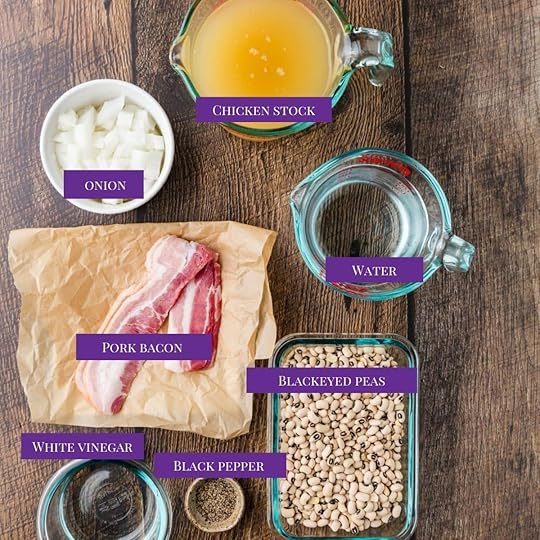 Pork bacon (lower sodium) â Adds a savory flavor while keeping sodium content manageable for a CKD-friendly diet.Chopped white onion â Provides a mild, sweet flavor to enhance the dishâs taste.Chicken stock (low sodium) â A flavorful cooking liquid that maintains a low-sodium profile.Water â Helps control the consistency and dilutes any additional sodium.Black pepper â Adds subtle spice without contributing to sodium or potassium levels.Blackeyed peas (fresh or frozen) â A traditional legume rich in fiber and protein, prepared to be kidney-friendly by avoiding canned versions.White vinegar â Adds a tangy flavor and enhances the gravy-like consistency of the dish
Pork bacon (lower sodium) â Adds a savory flavor while keeping sodium content manageable for a CKD-friendly diet.Chopped white onion â Provides a mild, sweet flavor to enhance the dishâs taste.Chicken stock (low sodium) â A flavorful cooking liquid that maintains a low-sodium profile.Water â Helps control the consistency and dilutes any additional sodium.Black pepper â Adds subtle spice without contributing to sodium or potassium levels.Blackeyed peas (fresh or frozen) â A traditional legume rich in fiber and protein, prepared to be kidney-friendly by avoiding canned versions.White vinegar â Adds a tangy flavor and enhances the gravy-like consistency of the dishSee recipe card for quantities.
How To Cook Blackeyed Peas On The StovePreparing this Good Luck Blackeyed Peas Recipe is straightforward, requiring just a few steps to bring the dish together. With a focus on easy techniques and CKD-friendly methods, youâll have a tasty and healthy meal in no time.
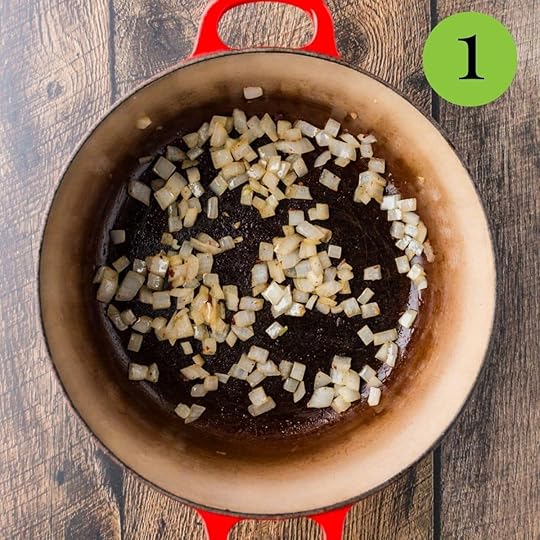 Cook bacon in a 5 qt Dutch Oven over medium heat until crisp. Remove bacon from pan, leaving grease and drippings in the pan to cook the onions in. Crumble bacon and set aside.
Cook bacon in a 5 qt Dutch Oven over medium heat until crisp. Remove bacon from pan, leaving grease and drippings in the pan to cook the onions in. Crumble bacon and set aside.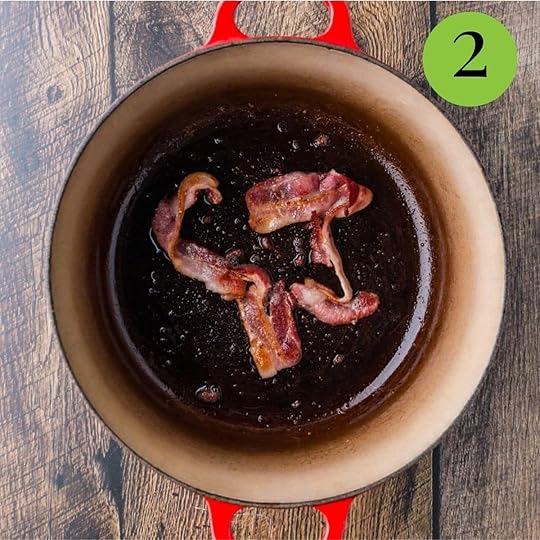
2. Add the chopped onion to the drippings in the pan; saute for about 4 minutes until clear.
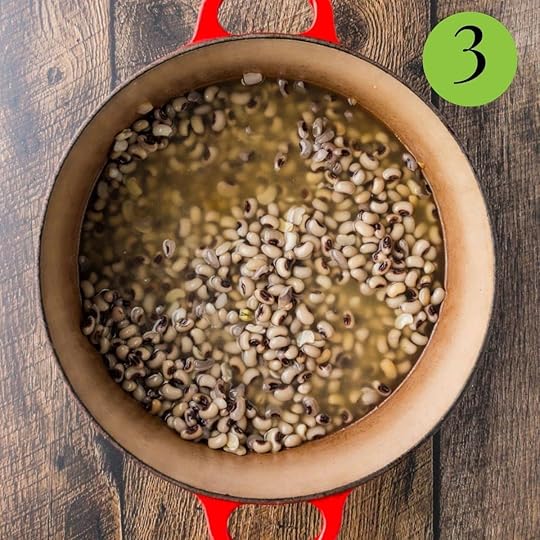
3. Add the broth, water, black pepper, and blackeyed peas, then bring the mixture to a boil. Reduce heat and let simmer 55 minutes or until peas are tender and water is evaporated.
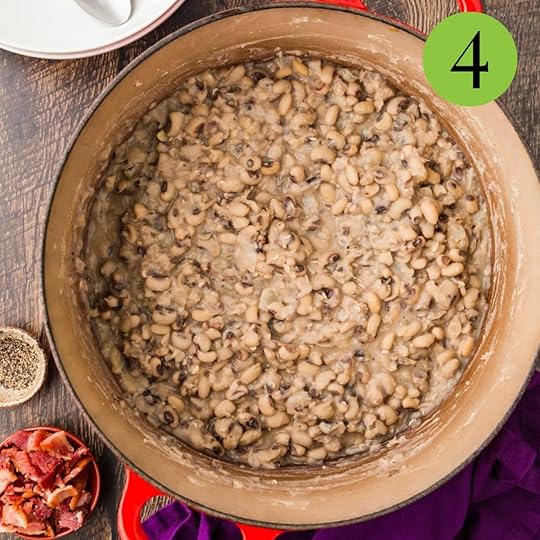
4. Add vinegar, which will make a gravy like appearance to the peas. Ladle even amounts into 4 serving dishes. Serve over rice if desired. Top with crumbled bacon.
Hint: Monitor the liquid level as the peas cook to ensure they donât dry out; add a splash of water if necessary.
SubstitutionsMaking ingredient swaps can help align the recipe even more closely with your dietary needs or flavor preferences. These substitutions maintain the deliciousness of the dish while enhancing its suitability for a kidney-friendly diet. Feel free to try these swaps for a personalized and health-conscious twist.
Swap black pepper with a salt-free seasoning blend for a flavor boost without extra sodium.Replace white vinegar with apple cider vinegar for a slightly sweeter taste.Use homemade low-sodium vegetable stock to have full control over sodium levels.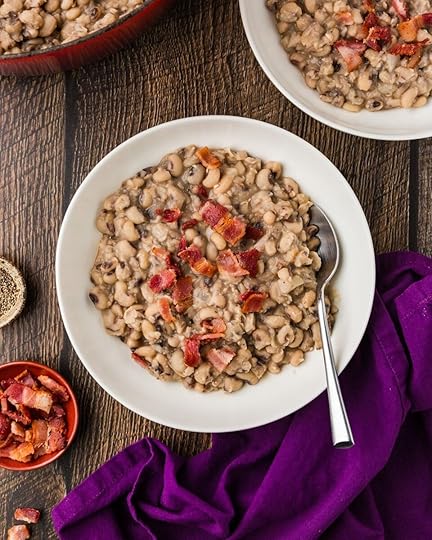 Variations
VariationsThis recipe offers plenty of flexibility to suit your taste preferences while maintaining its kidney-friendly profile. By incorporating thoughtful changes, you can enjoy a fresh take on this Southern classic without compromising your CKD dietary goals. These simple adjustments allow you to tailor the recipe to your liking while staying within safe nutritional guidelines.
Incorporate finely chopped red bell peppers for a pop of color and added nutrients.Substitute the pork bacon with turkey bacon or a plant-based bacon alternative for lower fat and sodium.Add a pinch of smoked paprika for a smoky flavor without using additional meat.Storage of CKD Friendly Blackeyed PeasProper storage ensures that your Frozen Blackeyed Peas Recipe stays fresh and flavorful for later enjoyment. Hereâs how to store it effectively:
Reheating Tip: Avoid reheating the dish multiple times to preserve its flavor and texture. Portion it into smaller containers before refrigerating or freezing for convenience.Refrigerator: Store any leftovers in an airtight container in the fridge for up to 3 days. Reheat gently on the stovetop, adding a splash of water or chicken stock to maintain the dishâs consistency.Freezer: To freeze, transfer the cooled black-eyed peas to a freezer-safe container or resealable bag, leaving a small amount of space for expansion. Freeze for up to 3 months and thaw in the fridge overnight before reheating.Top tipServe over a bed of rice or pair with a kidney-friendly side for a complete meal.
FAQs About Blackeyed Peas RecipesCan I use canned black-eyed peas instead of fresh or frozen?Itâs best to use fresh or frozen peas for this recipe to keep potassium levels manageable. If you must use canned peas, rinse them thoroughly to reduce sodium and potassium content.
What is the difference between crowder peas and black-eyed peas?Crowder peas are a variety of cowpeas, like black-eyed peas, but they have a creamier texture and a more earthy, robust flavor. Black-eyed peas, on the other hand, are slightly firmer and have a milder, nuttier taste. Both can be used in similar recipes with slight flavor variations.
How do I know when the peas are fully cooked?The peas should be tender but not mushy. Taste a few during cooking to check for doneness.
Related Side Dishes for CKDLooking for other recipes like this? Try these:
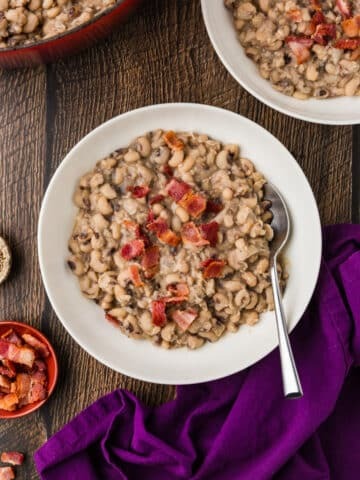 Frozen Blackeyed Peas Recipe
Frozen Blackeyed Peas Recipe Corn Pasta Salad
Corn Pasta Salad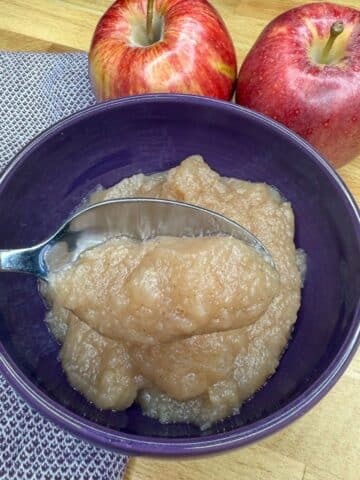 Sugar Free Applesauce
Sugar Free Applesauce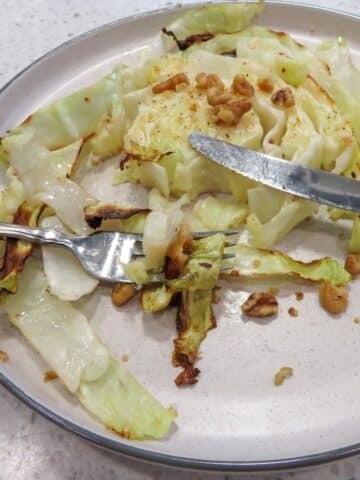 Oven Roasted Cabbage SteaksPairing with Black-Eyed Peas and Rice
Oven Roasted Cabbage SteaksPairing with Black-Eyed Peas and RiceThese are my favorite dishes to serve with CKD Friendly New Years Day Recipes:
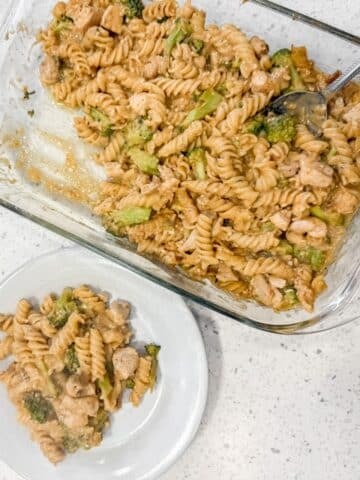 Chicken and Broccoli Pasta Bake
Chicken and Broccoli Pasta Bake Chicken Bacon Ranch Quesadilla
Chicken Bacon Ranch Quesadilla Roasted Cornish Hens
Roasted Cornish Hens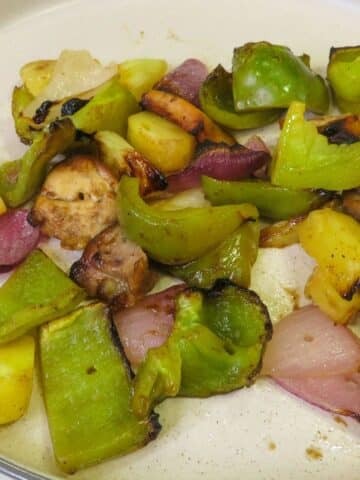 Hawaiian Chicken Pineapple Kabobs
Hawaiian Chicken Pineapple KabobsIf you tried this Recipe or any other recipe on my website, please please leave a star rating and let me know how it goes in the comments below. I love hearing from you!
Recipe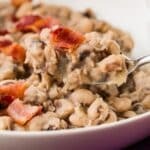 PrintFrozen Black Eyed Peas Recipe#wprm-recipe-user-rating-0 .wprm-rating-star.wprm-rating-star-full svg * { fill: #343434; }#wprm-recipe-user-rating-0 .wprm-rating-star.wprm-rating-star-33 svg * { fill: url(#wprm-recipe-user-rating-0-33); }#wprm-recipe-user-rating-0 .wprm-rating-star.wprm-rating-star-50 svg * { fill: url(#wprm-recipe-user-rating-0-50); }#wprm-recipe-user-rating-0 .wprm-rating-star.wprm-rating-star-66 svg * { fill: url(#wprm-recipe-user-rating-0-66); }linearGradient#wprm-recipe-user-rating-0-33 stop { stop-color: #343434; }linearGradient#wprm-recipe-user-rating-0-50 stop { stop-color: #343434; }linearGradient#wprm-recipe-user-rating-0-66 stop { stop-color: #343434; }#wprm-recipe-user-rating-0.wprm-user-rating-allowed.wprm-user-rating-not-voted:not(.wprm-user-rating-voting) svg * { fill-opacity: 0.3; }If you enjoy the southern tradition of eating black-eyed peas on New Year's Day, take heart!  I have worked on this recipe and removed some of the items that are high in potassium and phosphorus and made it still very yummy for you.  We have a black-eyed peas renal recipe for you.Course Side DishCuisine AmericanDiet Low SaltPrep Time 10 minutes minutesCook Time 1 hour hourServings 4Calories 134kcalAuthor Mathea Ford, RDN, LD, MBAEquipment1 Dutch OvenIngredients2 slices pork bacon lower sodium¾ cup chopped white onion2 cup chicken stock low sodium1 cup water½ teaspoon black pepper12 ounces blackeyed peas fresh or frozen¼ cup white vinegarGet ingredients with
PrintFrozen Black Eyed Peas Recipe#wprm-recipe-user-rating-0 .wprm-rating-star.wprm-rating-star-full svg * { fill: #343434; }#wprm-recipe-user-rating-0 .wprm-rating-star.wprm-rating-star-33 svg * { fill: url(#wprm-recipe-user-rating-0-33); }#wprm-recipe-user-rating-0 .wprm-rating-star.wprm-rating-star-50 svg * { fill: url(#wprm-recipe-user-rating-0-50); }#wprm-recipe-user-rating-0 .wprm-rating-star.wprm-rating-star-66 svg * { fill: url(#wprm-recipe-user-rating-0-66); }linearGradient#wprm-recipe-user-rating-0-33 stop { stop-color: #343434; }linearGradient#wprm-recipe-user-rating-0-50 stop { stop-color: #343434; }linearGradient#wprm-recipe-user-rating-0-66 stop { stop-color: #343434; }#wprm-recipe-user-rating-0.wprm-user-rating-allowed.wprm-user-rating-not-voted:not(.wprm-user-rating-voting) svg * { fill-opacity: 0.3; }If you enjoy the southern tradition of eating black-eyed peas on New Year's Day, take heart!  I have worked on this recipe and removed some of the items that are high in potassium and phosphorus and made it still very yummy for you.  We have a black-eyed peas renal recipe for you.Course Side DishCuisine AmericanDiet Low SaltPrep Time 10 minutes minutesCook Time 1 hour hourServings 4Calories 134kcalAuthor Mathea Ford, RDN, LD, MBAEquipment1 Dutch OvenIngredients2 slices pork bacon lower sodium¾ cup chopped white onion2 cup chicken stock low sodium1 cup water½ teaspoon black pepper12 ounces blackeyed peas fresh or frozen¼ cup white vinegarGet ingredients with  InstructionsCook bacon in a 5 qt Dutch Oven over medium heat until crisp. Remove bacon from pan, leaving grease and drippings in the pan to cook the onions in. Crumble bacon and set aside.Add the chopped onion to the drippings in the pan; saute for about 4 minutes until clear. Add the broth, water, black pepper, and blackeyed peas, then bring the mixture to a boil. Reduce heat and let simmer 55 minutes or until peas are tender and water is evaporated. Add vinegar, which will make a gravy like appearance to the peas. Ladle even amounts into 4 serving dishes. Serve over rice if desired. Top with crumbled bacon.NutritionCalories: 134kcal | Carbohydrates: 22g | Protein: 9g | Fat: 1g | Saturated Fat: 0.4g | Polyunsaturated Fat: 0.3g | Monounsaturated Fat: 0.4g | Sodium: 53mg | Potassium: 385mg | Fiber: 6g | Sugar: 4g | Vitamin A: 15IU | Vitamin C: 3mg | Calcium: 36mg | Iron: 2mg | Phosphorus: 178mgCheck Out Our Meal Plans For People With Chronic Kidney Disease (CKD)
InstructionsCook bacon in a 5 qt Dutch Oven over medium heat until crisp. Remove bacon from pan, leaving grease and drippings in the pan to cook the onions in. Crumble bacon and set aside.Add the chopped onion to the drippings in the pan; saute for about 4 minutes until clear. Add the broth, water, black pepper, and blackeyed peas, then bring the mixture to a boil. Reduce heat and let simmer 55 minutes or until peas are tender and water is evaporated. Add vinegar, which will make a gravy like appearance to the peas. Ladle even amounts into 4 serving dishes. Serve over rice if desired. Top with crumbled bacon.NutritionCalories: 134kcal | Carbohydrates: 22g | Protein: 9g | Fat: 1g | Saturated Fat: 0.4g | Polyunsaturated Fat: 0.3g | Monounsaturated Fat: 0.4g | Sodium: 53mg | Potassium: 385mg | Fiber: 6g | Sugar: 4g | Vitamin A: 15IU | Vitamin C: 3mg | Calcium: 36mg | Iron: 2mg | Phosphorus: 178mgCheck Out Our Meal Plans For People With Chronic Kidney Disease (CKD)The post Frozen Blackeyed Peas Recipe appeared first on Renal Diet HQ.



